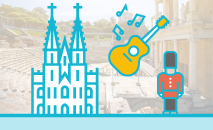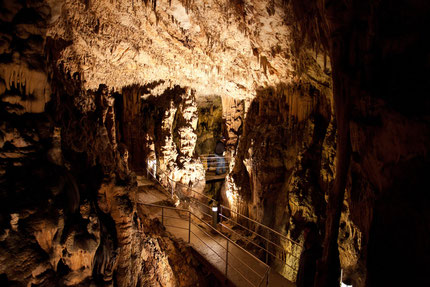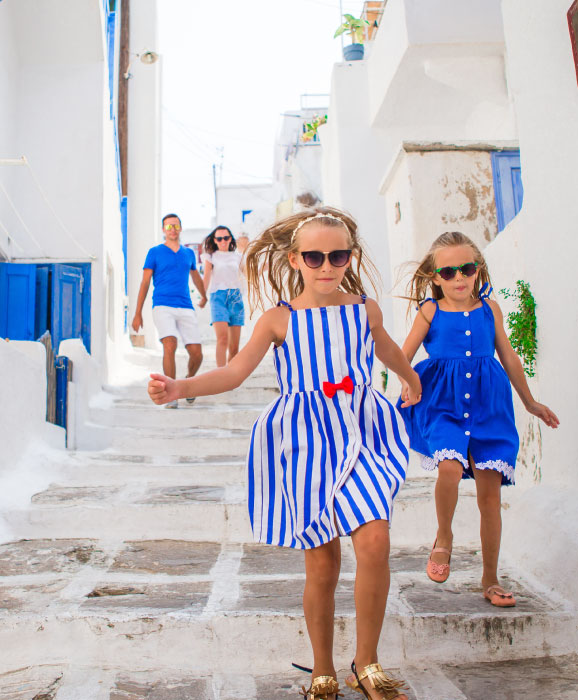Island of Krk, legend and reality
Among the 1185 Croatian islands, only one of them is the golden one, the Insula Aurea – the island of Krk. Located in the centre of the Kvarner bay, it is considered one of the most attractive tourist destinations. Its mild Mediterranean climate, good geographical position and variety of natural and cultural beauties gave it, even in ancient times, the name "Golden Island". Its cultural heritage has given it another name – the cradle of Croatian culture, whilst at the beginning of the 20th century it gained the name the “sixth continent”.
The 45th parallel passes through the island, whilst its longest part is 38 km and its widest 20 km long. Its coast is around 190 km long. The closest mainland is only about a hundred meters away. Its neighbouring islands are the island of Cres, Losinj and Rab.
A few smaller islands also pertain to it (the largest being Plavnik, which has 17 km coastline and the smaller Školjić with just 400 m coastline). It has an unusual and varied relief, climbing from the north western part to the south eastern part, from picturesque gentle coves and lagoons, along fertile fields and dense forests with submediterranean vegetation, to the parts of bare limestone and real mountain landscape. On the island of Krk there are three streams and two lakes.
On the highest mountaintop, Obzovi (570 m), visitors may forget that they are actually on an island. Here some very specific phenomena can be found – such as the flora in Krk, which comprises around 1400 species of land plants, which almost half of the total in Croatia. Its unique plant the “Barbašova lazarkinja” is one of the world's rarities and it only grows in the Baška lagoon.
Amongst its fauna, we can count rare species too, bird species, for example, vary from eagles/vultures to the oriental steppe "vrški tić". To all this complex contrast of natural characteristics we should add Mediterranean climate – hot summers and mild winters, a cold continental wind that blows from the north-east-the bora and the humid jugo, and a pleasant summer wind, the mistral, that blows from the west.
Literally all roads lead to the island of Krk: from the land – over the Krk bridge; from the sea – by boats into the ports or small marinas, and by ferry to the Valbiska harbour, from the air – by plane to Rijeka's airport which is located close to Omišalj.
The island of Krk is just 30 kilometres away from the city of Rijeka – which is the traffic, business, commercial, university and cultural centre of Kvarner. No matter which road you choose, on your arrival to the island of Krk, you will certainly find that the golden island has been honoured with the uniqueness of variety – and is a connection between the present and the past, the modernity and the ancient, the legend and the reality.
Since ancient times it has been believed that the destiny of the island of Krk is connected to number seven: it was inhabited by the Croatian people in the 7th century, it has survived attacks by pirates seven times, the seventh nobleman from the Frankopan family was the last Prince of Krk. Today the island of Krk has seven centres, Omišalj, Malinska- Dubašnica, Krk, Punat, Baška, Dobrinj, Vrbnik, well known touristic destinations.
Best hotels
in Krk Island
9.6
Hotel Vila Rova ★★★★
Set in Rova Bay on the north-western coast of Krk
This hotel has an excellent location score of 9.7
9.3
Spa & Wellness Hotel Pinia ★★★★
Situated next to the sea, steps away from a beach
Great Food: Meals here are highly recommended
9.1
Hotel Vinotel Gospoja ★★★★
Hotel Vinotel Gospoja is set in Vrbnik, near a beach
The hotel has a spa centre and sauna
Krk Island
image gallery
Top things to do
in Krk Island
Spilja Biserujka - Biserujka Cave
Biserujka cave is located on the island of Krk 300 meters north-west of the Rudine village. The cave is adjusted to tourists and offers a wealth od cave decorations, calcareous sinters, stalagmites and stalactites. According to a speleological classifications it represents a simple cave with mouth that lead into a gently sloping cave channel . Its underground areas include Mouth Balcony, Shaft, Great Hall, Northern Channel Arched Hall and Cypress Hall.
Biserujka cave is also known as Vitezićeva Cave.The lowest point of the cave was measured at 13 meters, and bottom of the cave is only 30 meters above the sea level.
Aquarium Terrarium
The Aquarium – Terrarium Krk offers visitors an unforgettable experience and allows them to get better acquainted with Adriatic life.It is home to over one hundred species of Adriatic fish (moray, dusky grouper, seahorse, spider crab, octopus..) and other fascinating tropical fish. A caiman , an Asian boa an iguana and a Yemen chameleon are just some of the exotic inhabitans of the largest regional terrarium.
A large collection of Adriatic schellfish is exibited in 380 m2 of attractive exibition space

Infeld Galerija - Infeld Gallery
At the beginning of the 20th century, one of the main Dobrinj attractions was the house of sailor Franjo Vušković. From the outside, it attracted attention with the style of construction and the colourfulness of the facade, while from the inside one could hear the sounds which intensified the general impression.
Those were the mixed sounds of the gramophone music and the song of a parrot that Franjo Vušković brought from one of his journeys. Ninety years letter one of the greatest world art collectors restored the house's original exterior and expanded its interior to more than 400 sq m. Thanks to now deceased Peter Infeld, the so-called "Lady of Dobrinj" attracts with its beauty once again alluring and increasing number of visitors
Church of St. Lucia, Baška Tablet , Jurandvor (Baška)
Church of St. Lucia in the nearby Jurandvor (Baška), an early Romanesque church , the revered birthplace of the Croatian national past and culture . The church stores a copy of the Baška Tablet , the most significant monument of the Croatian language and literature, written in the Croatian Glagolitic alphabet (around 1100) the oldest Slavic alphabet.
The sacral complex of the Krk Cathedral , town of Krk
The sacral complex of the Cathedral of Our Lady of the Assumption from the 5th century with the Church of St. Mary and the Church of St. Quirinus, the patron saint of the town (11th and 12th.c) in which a sacral collection is displayed, and a bell-tower from the 18th century. The cathedral was built on the remnants of the Roman termal spa. Preserved urban city city areafrom the Roman period inside the town walls that gained its present look in the period from 12th until 15th century.
Kamplin Square lat. campus an exercise area of the nearby thermal spa during the Roman period with a Frankopan castle buil in the period from the 12th until 14th century. Its purpose was to protect the town from attacks from the side facing the sea ,while the quadrangular tower served as a courtroom.

Explore Croatia

Cliff Jumping Experience
Rock climbing & cliff jumping experience in Split

Dubrovnik Sunset Cruise
Discover Dalmatian cuisine on a dinner cruise

Zadar Tandem Skydive
Have a unique experience of the Zadar region from above

Zrmanja Canoe Safari
Go through magnificent canyons and underneath waterfalls
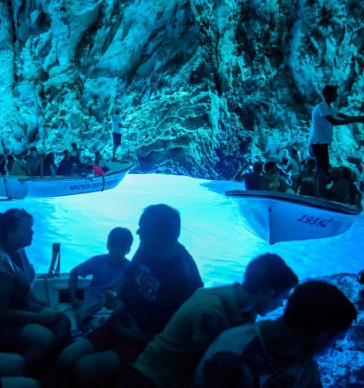
Blue Cave & Hvar tour
Day tour from Split or Trogir to visit Hvar Island and the Blue Cave

Croatia by boat
Croatia gives you the best nautical routes in the Adriatic Sea.

Explore Plitvice Lakes
Welcome to the most beautiful National Park in Europe!

Greeting to the Sun
Zadar sunsets were the most beautiful in the world
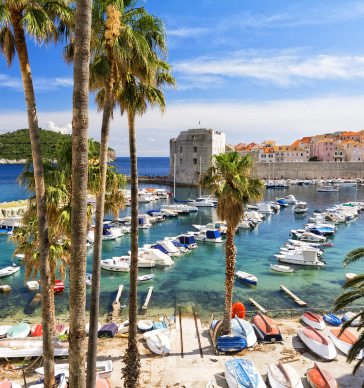
Discover Dubrovnik
Nature, culture, arts and architecture are inseparable parts of the city.

Weekend break in Pula
Pula is an exciting city for history lovers!

Weekend break in Zadar
Discover a holiday atmosphere of tranquility and serenity.
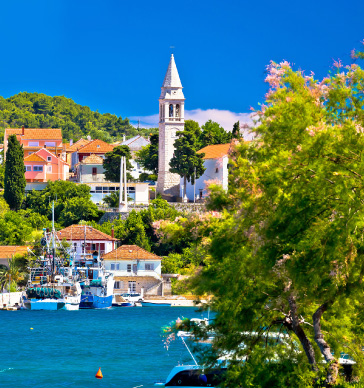
Island of Ugljan
Explore an island full of hidden treasures
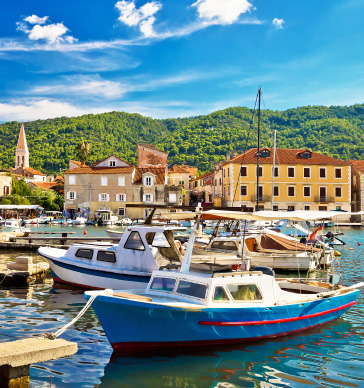
Visit Stari Grad
A unique heritage recognized by the UNESCO

Visit Krk Island
Discover its charms & treasures in every season.

Best things to do Zagreb
Our selection of the best things to see and do in Zagreb

Visit Motovun
Explore one of the most visited places in Croatia.

Advent in Zagreb
A special Christmas atmosphere to be experienced!













